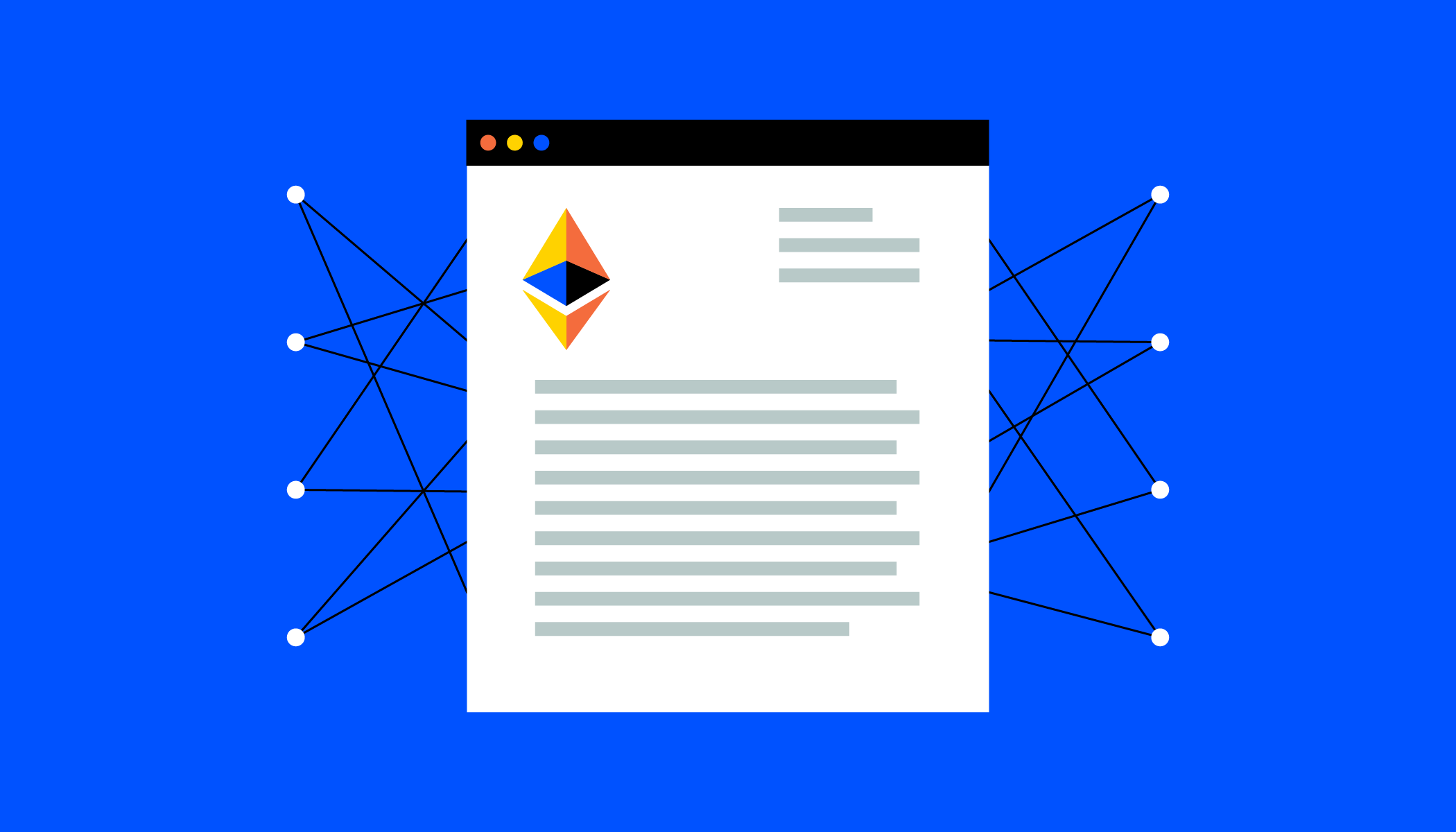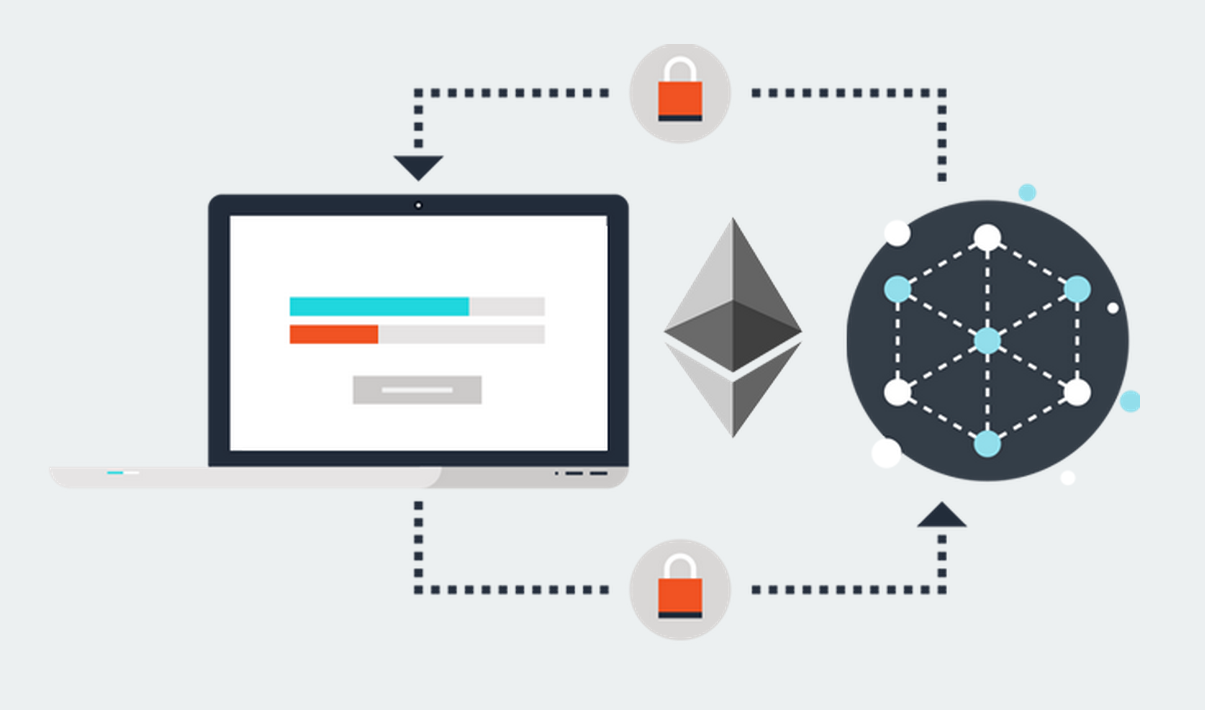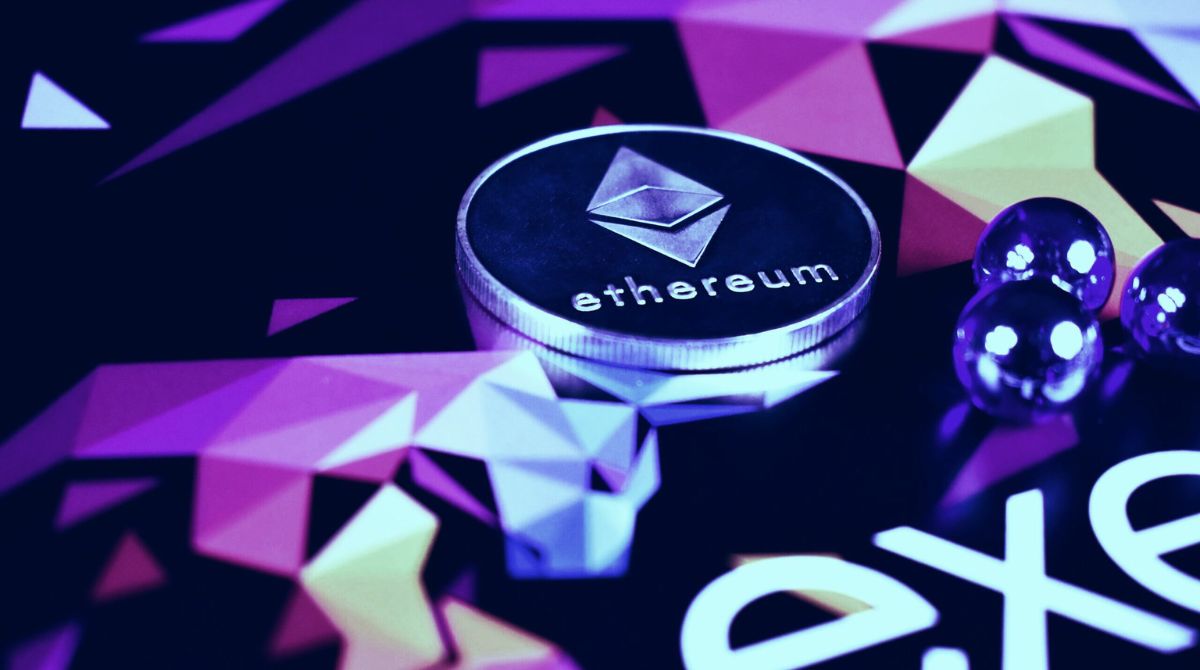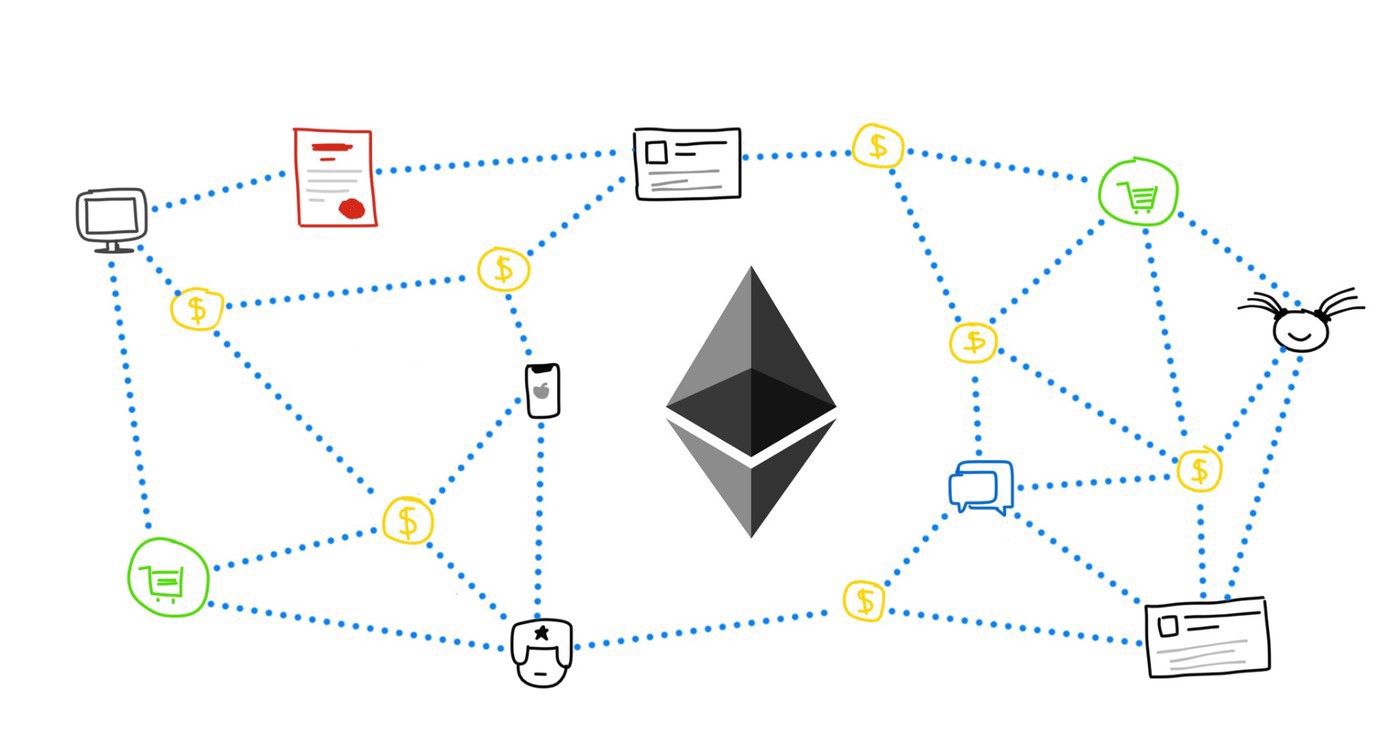Introduction
Welcome to the world of smart contracts! In this digital age, smart contracts have emerged as a revolutionary technology that is transforming traditional business processes. From the financial industry to supply chain management, smart contracts are unlocking a whole new level of efficiency, transparency, and security.
But what exactly are smart contracts? Essentially, smart contracts are self-executing contracts with predefined rules and conditions encoded directly into the lines of code. These contracts automatically execute actions once certain conditions are met, without the need for intermediaries like lawyers or banks. Smart contracts are powered by blockchain technology, which ensures trust and immutability.
So why should you care about smart contracts? The benefits are immense. By eliminating the need for middlemen, smart contracts reduce costs and streamline processes. They also eliminate the potential for human error or manipulation, as the code strictly enforces the predetermined rules. Moreover, smart contracts enhance security by encrypting transactions and storing them across a decentralized network of computers.
If you’re new to smart contract writing, fear not! This guide will walk you through the process, from choosing a smart contract language to deploying and interacting with real-world examples. Whether you’re a developer looking to expand your skills or a business owner exploring the potential of smart contracts, this guide will equip you with the knowledge and tools you need to get started.
Before diving into the technical aspects, it’s important to note that writing smart contracts requires a solid understanding of blockchain technology, programming, and secure coding practices. It’s also essential to stay updated on the latest developments and best practices in the rapidly evolving smart contract landscape.
In the next sections, we’ll delve into the fundamentals of smart contracts and guide you on your journey to becoming a proficient smart contract writer. So, let’s get started and unlock the immense potential of smart contracts!
Understanding Smart Contracts
Before diving into the world of smart contract writing, it’s crucial to have a clear understanding of what smart contracts are and how they function. At its core, a smart contract is a digital agreement that is self-executing and operates autonomously based on predefined conditions.
Unlike traditional contracts, which are typically written in natural language and require intermediaries to enforce their terms, smart contracts are written in code. This code is executed on a blockchain network, such as Ethereum or Hyperledger, ensuring transparency, security, and immutability.
Smart contracts are composed of a set of rules and conditions that define the terms of the agreement. These rules can range from simple IF-THEN statements to complex multi-step processes that involve multiple parties and interactions with external data sources.
Once a smart contract is deployed to the blockchain network, it becomes immutable. The code cannot be altered or tampered with, ensuring that the terms of the contract are executed precisely as intended.
One of the key features of smart contracts is their ability to execute transactions automatically. When predefined conditions are met, such as a certain date or a specific event occurring, the smart contract initiates the specified action. This eliminates the need for manual intervention or reliance on third parties.
Smart contracts have numerous applications across various industries. In finance, smart contracts can automate the execution of financial agreements, such as loans or insurance policies, without the need for intermediaries. In supply chain management, smart contracts can track the movement of goods and automatically trigger payments upon delivery. These are just a few examples of how smart contracts are revolutionizing traditional industries and streamlining business processes.
It’s important to note that, despite the name, smart contracts are not limited to legal agreements. They can encompass a wide range of agreements, including financial transactions, voting systems, digital identities, and decentralized applications (DApps).
As you embark on your journey to becoming a smart contract writer, it’s essential to grasp the fundamental principles of smart contracts and their potential applications. In the following sections, we will explore the process of writing smart contracts, from selecting a programming language to deploying and interacting with real-world examples. So, let’s continue our exploration and delve deeper into the world of smart contract writing!
Why Use Smart Contracts?
Smart contracts offer a myriad of benefits that make them an attractive solution for businesses and organizations across various industries. Let’s explore some of the key reasons why you should consider using smart contracts in your operations.
Efficiency: Traditional contracts often involve a lengthy and cumbersome process of drafting, reviewing, and signing. Smart contracts, on the other hand, automate the entire contract lifecycle, from creation to execution. This streamlined process saves time and effort, allowing transactions to be completed more quickly and efficiently.
Transparency: Smart contracts operate on a public blockchain, making all contract terms and actions visible to relevant parties. This transparency helps to build trust and eliminates ambiguity in negotiations and transactions.
Cost Savings: By eliminating the need for intermediaries, such as lawyers or brokers, smart contracts significantly reduce costs associated with traditional contract execution. The automated nature of smart contracts also minimizes the risk of errors and disputes, further reducing costs related to resolution and litigation.
Security: Smart contracts are based on blockchain technology, which provides inherent security features. The decentralized nature of blockchain ensures that transaction data is stored across multiple nodes, making it difficult for malicious actors to alter or manipulate the contract. Additionally, the use of cryptographic algorithms enhances data security, protecting sensitive information.
Trustworthiness: The use of smart contracts eliminates the need to rely on trust between parties. The code enforces the terms of the contract, ensuring that everyone involved adheres to the agreed-upon conditions. This reduces the risk of fraud and fosters trust in business relationships.
Automation: Smart contracts can automate complex processes without human intervention. For example, in supply chain management, smart contracts can automatically track the movement of goods and trigger payments upon successful delivery. This automation improves efficiency and reduces the risk of error that can occur in manual processes.
Immutable Records: Once deployed on the blockchain, smart contracts cannot be altered or tampered with. This immutability ensures that the terms of the contract remain unchanged, providing a reliable and auditable record of all transactions and interactions.
Flexibility: Smart contracts can be easily customized and modified to fit specific business needs. The ability to update and upgrade smart contracts allows for adaptability in a rapidly changing business environment.
These are just a few of the many reasons why smart contracts are gaining popularity across industries. By leveraging the power of blockchain technology, smart contracts offer numerous advantages that can drive efficiency, transparency, and security in your business operations.
In the next sections, we will guide you through the process of writing smart contracts and provide best practices to ensure your smart contract implementations are successful. So, let’s delve deeper into the world of smart contract writing and unleash the full potential of this transformative technology!
Getting Started with Smart Contract Writing
Now that you understand the benefits of smart contracts, it’s time to dive into the process of writing your own smart contracts. Here are some key steps to help you get started:
1. Define the Purpose: Before you begin writing code, it’s essential to clearly define the purpose and requirements of your smart contract. Identify the specific problems you want to solve or the processes you want to streamline with the use of a smart contract. Having a clear understanding of your project goals will guide your development process.
2. Choose a Blockchain Platform: Select a blockchain platform that supports smart contracts, such as Ethereum, Hyperledger, or EOS. Each platform has its own strengths and limitations, so it’s important to consider factors like security, scalability, and community support when making your choice.
3. Select a Smart Contract Language: Different blockchain platforms support different programming languages for developing smart contracts. For example, Ethereum primarily uses Solidity, while Hyperledger Fabric supports Go, JavaScript, or Java. Choose a language that aligns with your development skills and the requirements of your project.
4. Set Up the Development Environment: Install the necessary tools and software to set up your development environment. This may include a blockchain client, an integrated development environment (IDE), and smart contract testing frameworks. Familiarize yourself with the development environment and ensure that you have a clean and efficient setup.
5. Learn the Smart Contract Language: If you’re new to the smart contract language you’ve chosen, take the time to learn and understand its syntax, data types, control structures, and other key features. Solidity, for example, has its own unique syntax that may differ from other programming languages you’re familiar with.
6. Start Coding: Begin writing your smart contract code, following best practices and guidelines for the chosen smart contract language. Pay attention to details like variable naming conventions, code indentation, and commenting to ensure that your code is clean, readable, and maintainable.
7. Test and Debug: Thoroughly test your smart contract code to identify and fix any bugs or issues. Use tools like unit testing frameworks and code debugging techniques to ensure the integrity of your code. This step is crucial in ensuring that your smart contract functions as intended.
8. Deploy the Smart Contract: Once you are satisfied with your code and have conducted successful testing, it’s time to deploy your smart contract to the blockchain. Follow the deployment instructions provided by your chosen blockchain platform, ensuring that you securely store the contract’s address and other relevant deployment details.
9. Interact with the Smart Contract: After deployment, you can interact with your smart contract by calling its functions and accessing its data. This can be done through various methods, such as web interfaces, command-line tools, or custom-built applications. Test the interaction with your smart contract to validate its functionality.
10. Iterate and Improve: Smart contract development is an iterative process. Monitor the performance of your smart contract and gather feedback from users or stakeholders. Continuously improve your smart contract by incorporating new features, fixing bugs, and optimizing its efficiency.
By following these steps, you can start your journey in smart contract writing and unlock the potential of this transformative technology. In the following sections, we will delve deeper into the technical aspects of smart contract writing and provide best practices to help you create robust and secure smart contracts.
Choosing a Smart Contract Language
When it comes to smart contract development, choosing the right programming language is crucial. Different blockchain platforms support different programming languages, each with its own unique features and characteristics. Here are some factors to consider when selecting a smart contract language:
Platform Compatibility: Ensure that the language you choose is supported by the blockchain platform you intend to deploy your smart contracts on. Each platform has its preferred languages: Ethereum primarily uses Solidity, Hyperledger Fabric supports Go, JavaScript, and Java, while EOS allows contracts to be written in C++ or a modified version of JavaScript.
Community and Support: Consider the size and vibrancy of the developer community for the language you are considering. A large and active community offers a wealth of resources, including documentation, tutorials, and support forums, which can be invaluable when you encounter challenges during development.
Development Experience: Take into account your own programming experience and familiarity with the programming languages under consideration. If you are already proficient in a particular language, it may be more efficient to leverage your existing knowledge rather than starting from scratch with a new language.
Popularity and Adoption: Evaluate the popularity and adoption rate of the language within the blockchain ecosystem. Higher adoption typically indicates greater community support, a larger talent pool of developers, and a richer ecosystem of libraries and frameworks that can expedite development and enhance functionality.
Language Features: Assess the language’s capabilities and features that may be beneficial for your specific smart contract development needs. Consider factors like language simplicity, support for object-oriented programming, integration with external services and APIs, and the availability of built-in security features.
Documentation and Tooling: Examine the availability and quality of documentation and development tools associated with the language. Solid documentation and robust tooling can greatly facilitate the development process and make it easier to debug, test, and deploy smart contracts.
Security Considerations: Look for languages that have built-in security features and mechanisms to prevent vulnerabilities commonly found in smart contracts, such as reentrancy attacks or integer overflow/underflow. Solidity, for example, has implemented specific features and best practices to address such security concerns.
Keep in mind that selecting the right smart contract language is not a one-size-fits-all decision. Each language has its strengths and limitations, and the choice ultimately depends on your specific project requirements and your own expertise as a developer.
By conducting thorough research and weighing these factors, you can make an informed decision when choosing a smart contract language. In the next sections, we’ll explore the process of setting up the development environment and writing your first smart contract, providing practical guidance and best practices along the way.
Setting Up the Development Environment
Before you start writing smart contracts, it’s important to set up a robust development environment. This environment includes the necessary tools and software required for smart contract development and testing. Here are the key steps to set up your development environment:
1. Install a Blockchain Client: Depending on the blockchain platform you’re using, you’ll need to install a blockchain client. For Ethereum, you can use clients like Geth or Parity. Hyperledger Fabric provides its own blockchain client, while EOS requires the installation of the EOSIO software.
2. Choose an Integrated Development Environment (IDE): Select an IDE that supports the programming language you’ve chosen for your smart contracts. Popular choices include Visual Studio Code, Atom, Remix, or Truffle Suite. These IDEs provide features like syntax highlighting, code completion, and debugging tools to streamline your development process.
3. Set Up a Local Blockchain Network: To test and debug your smart contracts locally, it’s beneficial to set up a local blockchain network. This allows you to deploy and interact with your smart contracts without incurring transaction fees on the main network. Tools like Ganache (for Ethereum) and Hyperledger Fabric’s local development network can help you set up a local blockchain network.
4. Configure Network Connections: If you’re planning to deploy your smart contracts on a testnet or the mainnet, configure the network connections in your development environment to connect to the desired blockchain network. Each blockchain platform has specific instructions for connecting to different networks, so refer to platform-specific documentation for guidance.
5. Set Up a Test Environment: Create a dedicated test environment to conduct comprehensive testing of your smart contracts. This environment should simulate real-world scenarios and test edge cases to ensure the robustness and reliability of your smart contract code. Use testing frameworks like Mocha or Truffle’s testing utilities to write and execute test cases.
6. Install Required Packages and Libraries: Depending on your chosen programming language and development environment, you may need to install additional packages and libraries. These dependencies can range from blockchain-specific libraries to testing frameworks or external APIs. Use package managers like npm or yarn to manage and install these required modules.
7. Version Control: Set up a version control system, such as Git, to track changes and collaborate with other developers if working in a team. Version control allows you to manage your codebase, revert to previous versions if needed, and facilitate seamless collaboration when developing smart contracts.
8. Explore Documentation and Tutorials: Familiarize yourself with the documentation and tutorials provided by the blockchain platform and the programming language you’re using. These resources are invaluable for understanding platform-specific features, best practices, and guidelines for secure smart contract development.
By following these steps and carefully setting up your development environment, you’ll create a productive and efficient workspace for smart contract development. Having a robust development environment in place will help streamline your coding process, facilitate testing, and ensure a smooth path towards deploying your smart contracts.
In the next sections, we will dive into the process of writing your first smart contract, covering the essential aspects of syntax, data types, and control structures. Stay tuned as we explore the exciting world of smart contract writing!
Writing Your First Smart Contract
Now that you have your development environment set up, it’s time to write your first smart contract. In this section, we’ll walk through the essential steps and considerations for writing a basic smart contract. Here’s a general guide to get you started:
1. Define the Contract: Begin by defining the purpose and structure of your smart contract. Determine the variables, functions, and events that will be part of your contract. Consider the data types you’ll need to store and manipulate data within the contract.
2. Select a Solidity Version: Solidity is a popular programming language for writing smart contracts on Ethereum. Start by selecting a suitable Solidity version for your contract. Consider factors such as language features, compatibility with the desired blockchain network, and the availability of libraries and frameworks.
3. Declare the Contract: Use the `contract` keyword to declare your smart contract. Give it a meaningful and descriptive name that reflects its purpose. For example, a simple contract for a digital marketplace could be named `Marketplace`.
4. Define Contract Variables: Declare the variables that your contract needs. These variables will hold the contract’s state and can be accessed and modified by various functions within the contract. Define variables for account addresses, numerical values, arrays, or any other data types required by your contract.
5. Write Functions: Functions are the building blocks of a smart contract. Define the functions that will be used to perform actions within the contract. Each function should have a unique name, optional input parameters, and an optional return type. Write the code logic within the function to implement the desired behavior.
6. Handle Events: Events are a way to emit and log specific occurrences within your smart contract. Use the `event` keyword to define events. Emit events within your contract functions to provide useful information to interested parties. Events can be useful for debugging, monitoring contract activity, and triggering external processes.
7. Implement Modifiers: Modifiers are reusable pieces of code that can be applied to functions to add additional checks or conditions. They provide a way to enforce access control, validate inputs, or perform other checks before executing a function. Define modifiers and apply them to appropriate functions as needed.
8. Implement Error Handling: Incorporate error handling mechanisms to gracefully handle exceptions and unexpected scenarios during the execution of your smart contract. Use `require`, `assert`, or `revert` statements to validate conditions and revert the contract state in case of an error.
9. Test, Debug, and Repeat: Thoroughly test and debug your smart contract before deploying it to the blockchain. Write comprehensive test cases to cover various scenarios and validate the expected behavior of your contract. Use debugging tools and techniques to identify and fix any issues.
10. Document Your Contract: Document your smart contract code to make it more understandable and maintainable. Add comments to explain the purpose and functionality of each section of code, including any external dependencies or considerations. This documentation will be helpful for future reference and collaboration.
Remember, this is just a basic guide to writing your first smart contract. Smart contract development can be complex, and it’s important to continuously learn and improve your skills. Refer to documentation, tutorials, and community resources to expand your knowledge and gain a deeper understanding of advanced topics and best practices.
In the next sections, we’ll explore best practices for smart contract writing, including security considerations, testing, deployment, and interacting with smart contracts. So, stay tuned as we continue our journey into the world of smart contract development!
Best Practices for Smart Contract Writing
When writing smart contracts, following best practices is crucial to ensure the reliability, security, and maintainability of your code. By adhering to these practices, you can minimize potential vulnerabilities and improve the overall quality of your smart contracts. Here are some key best practices to consider:
1. Code Readability: Write clean and well-organized code that is easy to read and understand. Use descriptive variable and function names, follow consistent coding conventions, and indent your code properly. Clear and readable code enhances collaboration, reduces the chances of errors, and makes your contracts more maintainable.
2. Security Considerations: Prioritize security when writing smart contracts. Take precautions to prevent common vulnerabilities, such as reentrancy attacks, integer overflow/underflow, and unchecked user inputs. Follow industry best practices and employ secure coding patterns to minimize the risk of exploitation.
3. Minimize Complexity: Keep your smart contracts simple and modular. Avoid unnecessary and complex logic that can increase the chances of bugs or vulnerabilities. Break down your contract into smaller functions and libraries that can be tested and audited independently.
4. Make Use of Libraries: Leverage established libraries and code from trusted sources whenever possible. Reusing well-tested code reduces the chances of introducing bugs and ensures a higher level of reliability. However, thoroughly review third-party code to ensure it aligns with your contract’s requirements and security standards.
5. Comment and Document: Add comments and documentation throughout your smart contract code to explain its purpose, functionality, and any important considerations. Document external dependencies, interfaces, and any custom data structures used within your contract. Well-documented code helps future developers understand and maintain your contracts.
6. Follow Gas Optimization: Gas is the computational unit used to measure the cost of executing operations on the blockchain. Optimize your smart contracts to minimize gas consumption and reduce transaction costs. Use efficient algorithms, avoid unnecessary computations, and be mindful of the impact of storage and loop iterations on gas consumption.
7. Thorough Testing: Develop comprehensive test cases to cover different scenarios and edge cases. Test both the functional correctness and security of your smart contracts. Use automated testing frameworks and tools to streamline the testing process and ensure robustness.
8. Upgradeability and Maintenance: Design your smart contracts with upgradeability and maintenance in mind. Consider the potential need for contract upgrades and plan for seamless migration of data and functionality. Implement mechanisms, such as contract versioning or proxy contracts, to facilitate future enhancements without disrupting existing deployments.
9. Continuous Learning: Stay up-to-date with the latest developments, best practices, and security considerations in the blockchain and smart contract space. Join online communities, attend conferences, and read technical articles to expand your knowledge and improve your skills as a smart contract developer.
Implementing these best practices will help you write secure, efficient, and maintainable smart contracts. Remember that the smart contract landscape evolves rapidly, so it’s important to continuously learn, adapt, and stay informed about emerging technologies and industry standards.
In the next sections, we’ll dive deeper into testing and debugging smart contracts, as well as the process of deploying and interacting with them. So, let’s continue our journey to become proficient smart contract developers!
Testing and Debugging Smart Contracts
Testing and debugging are critical steps in the development process of smart contracts. Thorough testing helps ensure the correctness, reliability, and security of your smart contract code. Here are some best practices for testing and debugging smart contracts:
1. Unit Testing: Write unit tests to validate the individual functions and components of your smart contract code. Unit tests allow you to verify the expected behavior of specific functions and catch any errors or bugs early in the development process. Use testing frameworks like Truffle, Solidity-coverage, or Waffle to facilitate unit testing.
2. Functional Testing: Conduct functional testing to verify that your smart contract performs as intended in a real-world scenario. Test different use cases, edge cases, and input combinations to ensure the correctness and reliability of your contract logic. Use automation tools and frameworks to streamline functional testing.
3. Security Audits: Consider engaging security experts or auditors to conduct a thorough security audit of your smart contract code. These audits help identify potential vulnerabilities and weaknesses that can be exploited by malicious actors. Address any identified security issues to enhance the robustness of your contracts.
4. Testnet Deployment: Deploy your smart contracts to a testnet environment, such as the Ethereum Ropsten or Kovan testnet, for a real-world simulation of contract execution. Testnet deployments provide valuable insights into gas consumption, network interactions, and potential issues that may not be encountered in a local development environment.
5. Emulator and Debugger Tools: Utilize emulator and debugger tools provided by blockchain platforms, such as the Remix IDE or Truffle Debugger, to diagnose and fix runtime issues in your smart contracts. These tools allow you to step through contract execution, inspect variables, and identify potential bugs or logical errors in real-time.
6. Debugging Techniques: Apply standard debugging techniques to identify and resolve issues in your smart contract code. Use logging and event emission to trace the flow of execution, print intermediate values to the console, and conduct code reviews or pair programming to leverage the expertise of your colleagues.
7. Gas Optimization during Testing: Keep gas usage in mind while testing your smart contracts. Gas costs can impact transaction fees and contract deployment fees on the blockchain. Optimize your code for gas efficiency by identifying gas-intensive operations, reducing unnecessary computations, and considering alternative design approaches.
8. Edge Case and Negative Testing: Test your smart contracts with various edge cases and negative scenarios to ensure that your contracts can handle unexpected situations gracefully. Test inputs that are at the upper and lower limits of acceptable ranges, as well as incorrect or malicious inputs, to ensure your contracts respond and handle exceptions appropriately.
9. Document Testing Procedures and Results: Keep track of your testing process, including test scenarios, test data, and observed results. Documenting your testing procedures allows you to reproduce tests, track progress, and serve as a reference for future developers working on the project.
10. Continuous Integration and Delivery: Implement continuous integration and delivery (CI/CD) pipelines to automate the testing process. CI/CD pipelines ensure that your smart contract code is continually tested, integrated, and deployed into the desired environment. Use tools like GitHub Actions, Jenkins, or Travis CI to configure your CI/CD workflows.
By following these testing and debugging practices, you can increase the reliability and security of your smart contracts. Regular testing, combined with thorough debugging, helps catch issues early and ensures that your smart contracts can perform as intended when deployed to the blockchain.
In the next sections, we’ll explore the process of deploying your smart contracts, as well as interacting with them through various methods. So, let’s continue our journey into the world of smart contracts and unlock their full potential!
Deploying Smart Contracts
Once you have developed and thoroughly tested your smart contracts, the next step is deploying them to the blockchain network. Deployment makes your contracts available for execution and interaction by users and other smart contracts. Here are the key steps for deploying your smart contracts:
1. Compile Your Smart Contracts: Before deploying, compile your smart contract code into bytecode that can be executed on the blockchain. Use a compiler specific to your chosen programming language or development framework, such as solc (Solidity compiler).
2. Select the Deployment Network: Choose the network where you want to deploy your smart contracts. This could be a testnet for initial testing and verification or the mainnet for production use. Each blockchain platform provides specific instructions for connecting and deploying to different networks.
3. Configure Network Connection Details: Set up and configure the network connection details in your deployment script or configuration files. These details typically include the network provider URL, account credentials, gas limits, and other deployment parameters.
4. Deploy to the Blockchain: Utilize deployment tools or scripts provided by your chosen blockchain platform or development framework to deploy your smart contracts. These tools interact with the blockchain using your configured network connection details and handle transaction signing, gas calculations, and contract creation on the network.
5. Retrieve Contract Address: After successful deployment, the deployment tool will provide you with the contract address on the blockchain. The contract address is a unique identifier that allows you and others to interact with your deployed smart contract.
6. Verify and Validate: Consider verifying and validating your deployed smart contract on the blockchain. Many blockchain platforms provide mechanisms to verify your contract’s source code, bytecode, and other relevant details to enhance transparency, trust, and auditability.
7. Update Contract State: If your contract has state variables that require initial setup, interact with your deployed contract to initialize the necessary data. This may involve calling specific functions to set initial values, assign administrators, or configure the contract’s behavior.
8. Consensus Confirmation: Be patient and allow for consensus confirmation on the blockchain network. It may take some time for your transaction to be included in a block and for the deployment to become finalized and visible to all network participants.
9. Record Contract Deployment Details: Keep a record of the contract deployment details, including the contract address, compiler version used, network and deployment configuration, and any relevant transaction hashes. These records serve as important documentation for future reference, audits, and maintenance.
10. Update Your DApp or Application: If your smart contract is part of a decentralized application (DApp) or a larger application ecosystem, ensure that you update the relevant components to interact with the newly deployed contract address. Update any configuration files, APIs, or front-end interfaces that rely on the deployed smart contract.
By following these steps, you can successfully deploy your smart contracts to the blockchain network and make them available for execution and interaction. Deploying your contracts is an important milestone in the development process and paves the way for real-world usage and integration with other components of your application ecosystem.
In the next sections, we’ll explore different methods and techniques for interacting with smart contracts, allowing users to execute functions and access data. So, let’s continue our exploration of smart contracts and their practical applications!
Interacting with Smart Contracts
Once your smart contracts are deployed to the blockchain, users and other applications can interact with them to execute functions, retrieve data, and participate in the contract’s logic. Interacting with smart contracts can be done through various methods and interfaces. Here are some common ways to interact with smart contracts:
1. Web Interfaces: Build web interfaces, such as user interfaces or dashboards, that allow users to interact with your smart contracts via a web browser. Use front-end technologies like HTML, CSS, and JavaScript to create forms, buttons, and other elements that trigger contract functions and retrieve contract data.
2. Command-Line Tools: Develop command-line tools or scripts that interact with your smart contracts. These tools can provide a command-line interface (CLI) where users can input commands and arguments to execute contract functions, retrieve contract states, or listen to contract events.
3. Mobile Applications: Create mobile applications that integrate with your smart contracts through APIs or SDKs. Mobile apps can provide a user-friendly interface for smartphone users to interact with smart contracts, perform transactions, and access contract data on the go.
4. Client Libraries and SDKs: Leverage client libraries and software development kits (SDKs) provided by the blockchain platform to simplify smart contract interaction. These libraries abstract away the complexities of the underlying blockchain infrastructure and provide high-level functions and methods to interact with smart contracts programmatically.
5. Automated Smart Contract Execution: In certain scenarios, you may want your smart contracts to automatically execute specific functions based on predetermined conditions or external events. This can be achieved by utilizing external services, such as oracles or schedulers, to trigger contract function executions on the blockchain.
6. External Application Integration: Integrate your smart contracts with external systems or applications through APIs or messaging protocols. This allows external applications to interact with your smart contracts, exchange data, and trigger contract functions based on specific events or conditions.
7. DApp Integration: If your smart contract is part of a decentralized application (DApp) ecosystem, design and develop your DApp to interact seamlessly with your smart contracts. Utilize frameworks and methodologies such as Web3.js (for Ethereum) or EOSIO.js (for EOS) to establish a connection between your DApp and your deployed smart contracts.
8. Decentralized Oracle Integration: Integrate decentralized oracles into your smart contracts to access external data sources, such as market prices or real-world events. Oracles provide secure mechanisms to retrieve reliable and verified data that can be used in contract execution and decision-making processes.
9. Event Listening and Notifications: Set up event listeners within your application to capture and respond to specific events emitted by your smart contracts. These events can trigger notifications, updates, or specific actions in your application based on contract state changes or user interactions.
10. API and Data Retrieval: Expose APIs within your application to provide access to contract data and functionality. This allows external systems or applications to directly interact with your smart contracts through defined endpoints and retrieve contract data or execute functions.
These methods of interacting with smart contracts provide flexibility, convenience, and a wide range of options for users and applications to engage with your blockchain-based solutions. Consider the requirements of your use case and choose the most suitable interaction methods to provide a seamless user experience and integration.
In the following sections, we will explore real-world examples of smart contract deployment and interaction across various industries, providing you with practical insights and inspiration to apply this technology in your own projects.
Deploying and Interacting with Real-World Examples
Smart contracts have found practical applications in a wide range of industries, revolutionizing processes and enhancing efficiency. Let’s explore a few real-world examples of smart contracts and how they are deployed and interacted with:
1. Supply Chain Management: Smart contracts are being used to track and trace the movement of goods throughout the supply chain. Deploying smart contracts on a blockchain network allows stakeholders to securely record and verify every step of the supply chain, from sourcing raw materials to manufacturing and delivery. Parties involved can interact with the smart contracts by scanning QR codes, uploading documents, and triggering actions such as payments or quality checks.
2. Insurance Claims: The insurance industry benefits from smart contracts by automating claims and reducing fraudulent activities. Smart contracts are deployed to the blockchain, where policyholders can interact with them by submitting claims and providing evidence. The contract automatically evaluates the claim based on predefined rules and conditions, triggering the payment process if the claim is valid.
3. Real Estate Transactions: Smart contracts streamline the process of buying and selling real estate by automating the steps and ensuring transparency. Contracts can be deployed on a blockchain platform, allowing buyers and sellers to interact by digitally signing agreements, verifying property titles, and transferring ownership securely. Smart contracts eliminate the need for intermediaries, simplifying and expediting real estate transactions.
4. Decentralized Finance (DeFi): DeFi applications leverage smart contracts to offer financial services such as lending, borrowing, and decentralized exchanges. Users can deploy their crypto assets to the smart contracts, where the contracts automatically execute transactions and distribute returns based on predefined conditions. DeFi users interact with these contracts by depositing funds, borrowing assets, or participating in liquidity pools.
5. Voting Systems: Smart contracts improve the integrity and transparency of voting systems by deploying them on a blockchain. Voters can interact with the contracts by casting their votes, which are recorded immutably on the blockchain. The smart contract automates the tallying process and ensures vote accuracy and transparency, without the need for intermediaries.
6. Intellectual Property Protection: Smart contracts provide a secure and efficient way to protect intellectual property rights. Creators can deploy their work on a blockchain network, where the smart contract records ownership details and establishes verifiable proof of creation and ownership. Interacting with these contracts allows creators and users to authenticate and license intellectual property, streamline royalty payments, and enforce copyright agreements.
7. Energy Grid Management: Smart contracts are used to optimize energy grids and facilitate peer-to-peer energy trading. Grid participants deploy smart contracts that track energy production and consumption, allowing them to interact by buying and selling excess energy in a decentralized manner. The contracts manage energy transactions, automatically settling payments, and ensuring the efficient utilization of renewable energy resources.
These are just a few examples of real-world applications of smart contracts, showcasing the diverse industries and processes that can benefit from this technology. Through proper deployment and interaction with smart contracts, organizations can streamline workflows, improve transparency, and enhance security.
As you explore further into the world of smart contracts, take inspiration from these real-world examples and consider how you can leverage this technology to innovate and optimize processes in your own industry. The possibilities are vast, and with proper deployment and interaction, smart contracts have the potential to revolutionize many aspects of our society.
In the subsequent sections, we’ll delve into common mistakes to avoid in smart contract writing, as well as security considerations to ensure the integrity and safety of your contracts.
Common Mistakes to Avoid in Smart Contract Writing
When writing smart contracts, it is important to be aware of common mistakes that could compromise the functionality, security, or usability of your contracts. By proactively avoiding these mistakes, you can ensure that your smart contracts perform as intended and mitigate potential risks. Here are some common mistakes to be mindful of:
1. Insufficient Testing: Neglecting comprehensive testing can lead to hidden bugs or vulnerabilities in your smart contracts. Thoroughly test your contracts with diverse test cases, covering various scenarios and edge cases. Employ testing frameworks and tools to automate testing and ensure that your contract functions correctly.
2. Lack of Input Validation: Failing to validate user inputs can open your contract to potential attacks. Always validate and sanitize user input to prevent manipulation or injection of malicious code. Implement checks on variable ranges, data types, and logical constraints to ensure that inputs adhere to expected criteria.
3. Insecure External Calls: Incorrectly handling external calls to other contracts or external data sources can expose your smart contracts to security risks. Always validate and sanitize inputs from external sources, use external calls judiciously, and implement proper error handling to prevent unexpected behavior or attacks, such as reentrancy attacks.
4. Misuse of Gas: Not optimizing gas usage can result in higher transaction fees or even contract failures due to out-of-gas errors. Optimize your smart contracts for gas efficiency by reducing unnecessary computational steps, implementing gas-efficient algorithms, and avoiding excessive storage or computation within loops.
5. Lack of Upgradability Consideration: For contracts that may require updates or enhancements in the future, failure to incorporate upgradability mechanisms can lead to cumbersome migration processes or loss of data. Design contracts with future upgradability in mind, utilizing proxy patterns or upgradeable storage patterns to facilitate seamless upgrades without disruption.
6. Lack of Documentation: Failing to document your smart contract code and functionality can make it difficult for other developers to understand and contribute to the project. Document your contracts’ purpose, functionality, and important considerations, including any external dependencies or relevant data structures. This will improve maintainability and facilitate collaboration.
7. Lack of Error Handling: Ignoring or mishandling errors can result in unexpected behavior or potential vulnerabilities. Implement robust error-handling mechanisms to handle exceptional cases, revert contract state in case of errors, and provide descriptive error messages to help with debugging and troubleshooting.
8. Incomplete Understanding of Business Logic: Failing to fully understand the intricacies of the business logic or domain-specific requirements can lead to misaligned contract functionality. Collaborate closely with domain experts, thoroughly analyze the business requirements, and validate the contract implementation against these requirements to ensure accurate representation and execution of the desired business logic.
9. Ignoring Security Best Practices: Overlooking security best practices can expose your contracts to potential vulnerabilities or attacks. Familiarize yourself with secure coding practices, such as following the Principle of Least Privilege, implementing access controls, and using secure libraries. Stay informed about emerging security risks in the smart contract space to continuously update and enhance the security of your contracts.
10. Lack of Testing in Real-World Scenarios: Insufficient testing in real-world scenarios can result in an incomplete understanding of your smart contract’s behavior in actual deployment conditions. Test your contracts on testnets or private test environments, simulate various transaction volumes, and measure performance to ensure that your contract functions optimally in real-world usage.
By avoiding these common mistakes, you can enhance the reliability, security, and efficiency of your smart contracts. Remember to continually educate yourself on the latest best practices, industry standards, and emerging technologies in the smart contract space to stay ahead of potential pitfalls and build robust and resilient contracts.
In the following sections, we will explore important security considerations for smart contract writing to mitigate risks and ensure the integrity of your contracts.
Security Considerations for Smart Contracts
Security is paramount when it comes to smart contract development. Smart contracts can hold and execute valuable assets and transactions, making them attractive targets for attackers. To mitigate risks and protect your contracts and users, it is essential to consider the following security measures:
1. Code Audits: Engage security experts or auditors to conduct comprehensive code audits of your smart contract code. Audits help identify vulnerabilities and potential risks that can be exploited by malicious actors. Address any identified issues before deployment to ensure the integrity and security of your contracts.
2. Secure Coding Practices: Follow secure coding practices to reduce the attack surface of your contracts. Validate and sanitize user inputs, avoid unchecked external calls, use strong cryptographic algorithms, and implement access controls to protect sensitive operations and data.
3. Access Control and Permissions: Implement proper access controls to protect sensitive functions and data within your smart contracts. Granular permissions ensure that only authorized entities can execute specific functions or modify critical variables. Use role-based access control (RBAC) or other access control mechanisms to enforce proper authorization.
4. Permissioned or Private Blockchains: If your use case allows, consider using permissioned or private blockchains for sensitive or confidential contracts. These blockchains limit access to a predefined set of participants, enhancing privacy and ensuring that only trusted parties can participate in the network.
5. Secure External Data Integration: If your smart contracts rely on external data sources or oracles, implement security measures to ensure the validity and integrity of the data received. Use trusted sources, implement data verification mechanisms, and consider decentralized oracle networks for added security and reliability.
6. Encrypted Data Storage: Protect sensitive data stored in your contracts by ensuring proper encryption and storage mechanisms. Use encryption algorithms and best practices to safeguard critical information, such as cryptographic keys or personal identifiable information (PII), from unauthorized access.
7. Gas Limit Considerations: Be wary of gas limits during contract execution to prevent out-of-gas errors or denial of service attacks. Implement gas limits for functions and consider fallback mechanisms to gracefully handle out-of-gas scenarios.
8. Upgradeability and Auditing: If your contract is designed to be upgradable, exercise caution during upgrades to ensure that security measures are not compromised. Conduct thorough security audits after each upgrade to identify potential post-upgrade vulnerabilities and confirm that the contract adheres to security best practices.
9. Continuous Monitoring and Incident Response: Implement a monitoring mechanism that detects and alerts you about any unusual or suspicious activities related to your smart contracts. Establish an incident response plan to promptly address and mitigate any security incidents or breaches.
10. Security Education and Awareness: Continually educate yourself and your team about the latest security best practices, attack vectors, and emerging threats in the blockchain ecosystem. Stay updated with industry news and engage in the security community to share knowledge and experiences.
By incorporating these security considerations into your smart contract development process, you can greatly enhance the resilience and integrity of your contracts. However, it’s important to note that security is an ongoing effort, and it requires constant vigilance, adaptation, and improvement as the threat landscape evolves.
In the next sections, we will explore the process of upgrading and maintaining smart contracts, providing guidance on how to ensure the long-term viability and effectiveness of your contracts.
Upgrading and Maintaining Smart Contracts
Smart contracts, like any other software, require regular maintenance and occasional upgrades to adapt to changing requirements and mitigate potential vulnerabilities. Properly managing the upgrade and maintenance process is critical to ensure the long-term viability and effectiveness of your contracts. Here’s a guide on how to approach upgrading and maintaining smart contracts:
1. Plan for Upgradability: Consider upgradability during the initial design and development phase of your smart contract. Implement upgradability patterns, such as proxy contracts or upgradeable storage, that allow you to make changes without disrupting the existing contract logic or data.
2. Define Upgrade Mechanisms: Determine the process and mechanisms for upgrading your contracts. Define roles and permissions for initiating upgrades, ensuring that only authorized entities can make changes. Consider implementing voting mechanisms or multisig wallets to make upgrade decisions more transparent and secure.
3. Conduct Code Audits: Before upgrading your contracts, perform thorough code audits to identify potential vulnerabilities or issues. Engage security experts or auditors to review the code and provide recommendations for improvements. Address any identified issues before proceeding with upgrades.
4. Test Upgrades and Changes: Before deploying upgraded contracts to the mainnet or production environment, conduct thorough testing of the changes in a controlled and isolated testing environment. Write comprehensive test cases and simulate real-world usage scenarios to ensure that the upgrades function as intended and do not introduce new issues.
5. Ensure Data Migration: If your contract upgrades involve changes to data structures, plan for proper data migration. Develop migration scripts or mechanisms that transfer existing data from the old contract to the upgraded version, ensuring data continuity and integrity.
6. Communicate With Stakeholders: In situations where contract upgrades impact external stakeholders, such as users or dApp developers, communicate the changes in a timely and transparent manner. Provide documentation and notices about the upgrade process, including details of the changes, any required actions from stakeholders, and the migration plan.
7. Monitor and Respond: Continuously monitor the performance and behavior of upgraded contracts in the live environment. Implement monitoring tools that detect any anomalies or errors and set up alerts for potential security incidents. Establish incident response mechanisms to promptly address and mitigate any identified issues.
8. Document Upgrades and Changes: Maintain detailed records of the changes, upgrades, and version history of your smart contracts. Document the purpose and rationale behind each upgrade, the specific changes made, and any relevant metadata associated with the upgrades. This documentation will aid in maintaining an accurate and auditable record of your contract’s evolution.
9. Stay Informed: Keep yourself updated with the latest developments, best practices, and security considerations in smart contract development. Stay informed about platform updates, emerging technologies, and potential vulnerabilities to ensure that your contracts remain secure and up-to-date with industry standards.
10. Educate Your Team: Provide ongoing training and education to your development team about the nuances of maintaining and upgrading smart contracts. Encourage knowledge sharing, collaboration, and staying updated with the evolving smart contract ecosystem.
By following these guidelines, you can effectively manage the upgrade and maintenance process of your smart contracts. Regular maintenance and proper upgrades ensure that your contracts remain secure, efficient, and adaptable to changing business requirements.
In the upcoming sections, we will delve into best practices for optimizing smart contract performance and explore real-world examples to illustrate the transformative potential of smart contracts.
Conclusion
Smart contracts have emerged as a game-changing technology, revolutionizing traditional business processes and opening up new possibilities across industries. With their ability to automate transactions, enhance transparency, and increase security, smart contracts offer numerous benefits that organizations and developers can leverage.
In this guide, we covered the fundamentals of smart contracts, including their definition, purpose, and why they are valuable in today’s digital landscape. We explored the steps involved in writing smart contracts, from choosing a smart contract language to deploying and interacting with real-world examples.
We highlighted the importance of considering best practices throughout the smart contract development process, including testing, security considerations, and upgradeability. By following these best practices, developers can ensure that their smart contracts are efficient, robust, and secure.
Furthermore, we discussed common mistakes to avoid and security considerations to be mindful of when writing and deploying smart contracts. By avoiding these mistakes and adhering to security best practices, organizations can protect their smart contracts from potential vulnerabilities and attacks.
Smart contracts have found practical applications in numerous real-world use cases, such as supply chain management, insurance claims, and decentralized finance. We explored how these contracts are deployed and interacted with, highlighting the diverse methods and interfaces through which users can engage with smart contract functionality.
Finally, we discussed the essential processes of upgrading and maintaining smart contracts, emphasizing the importance of planning for upgradability, conducting code audits, and staying informed about emerging technologies and security considerations.
As technology continues to evolve, so too will the landscape of smart contracts. It is crucial to stay informed, continually learn, and adapt to emerging best practices and industry standards. By doing so, developers can unlock the full potential of smart contracts and harness their transformative power to revolutionize business processes and create innovative solutions.
Now, armed with the knowledge and insights shared in this guide, you are ready to embark on your own journey into the world of smart contract development. So go forth, explore, innovate, and contribute to the exciting and ever-expanding realm of smart contracts!

























